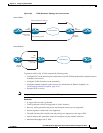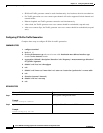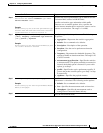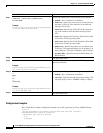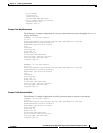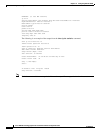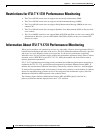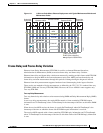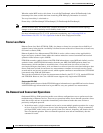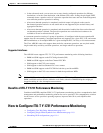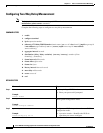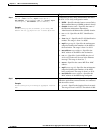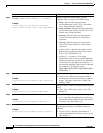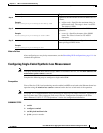
11-3
Cisco ASR 901 Series Aggregation Services Router Software Configuration Guide
OL-23826-09
Chapter 11 ITU-T Y.1731 Performance Monitoring
Information About ITU-T Y.1731 Performance Monitoring
Figure 11-1 A Point-to-Point Metro Ethernet Deployment with Typical Maintenance Entities and
Maintenance Points
Frame Delay and Frame-Delay Variation
Ethernet frame Delay Measurement (ETH-DM) is used for on-demand Ethernet Operations,
Administration & Maintenance (OAM) to measure frame delay and frame-delay variation.
Ethernet frame delay and frame delay variation are measured by sending periodic frames with ETH-DM
information to the peer MEP in the same maintenance entity. Peer MEPs perform frame-delay and
frame-delay variation measurements through this periodic exchange during the diagnostic interval.
Ethernet frame delay measurement supports hardware-based timestamping in the ingress direction.
These are the two methods of delay measurement, as defined by the ITU-T Y.1731 standard, One-way
ETH-DM (1DM) and Two-way ETH-DM (2DM). However, the Cisco ASR 901 router supports only
Two-way ETH-DM.
Two-way Delay Measurement
Two-way frame delay and variation can be measured using DMM and Delay Measurement Reply (DMR)
frames.
In two-way delay measurements, the sender MEP transmits a frame containing ETH-DM request
information and TxTimeStampf, where TxTimeStampf is the timestamp of the time at which the DMM
is sent.
When the receiver MEP receives the frame, it records RxTimeStampf, where RxTimeStampf is the
timestamp of the time at which the frame with ETH-DM request information is received.
The receiver MEP responds with a frame containing ETH-DM reply information and TxTimeStampb,
where TxTimeStampb is the timestamp of the time at which the frame with ETH-DM reply information
is sent.
Operator A NEs Operator B NEs
Subscriber
Equipment
1
Subscriber
Equipment
8
2 3 4 5 6 7
Service Provider
Subscriber
MEG
Test MEG
EVC ME
E-NNI ME
UNI MEG
UNI ME
Operator A
Operator B MEG
281942
MEP (up orientation)
MEP (down orientation)
Logical path of SOAM PDUs



